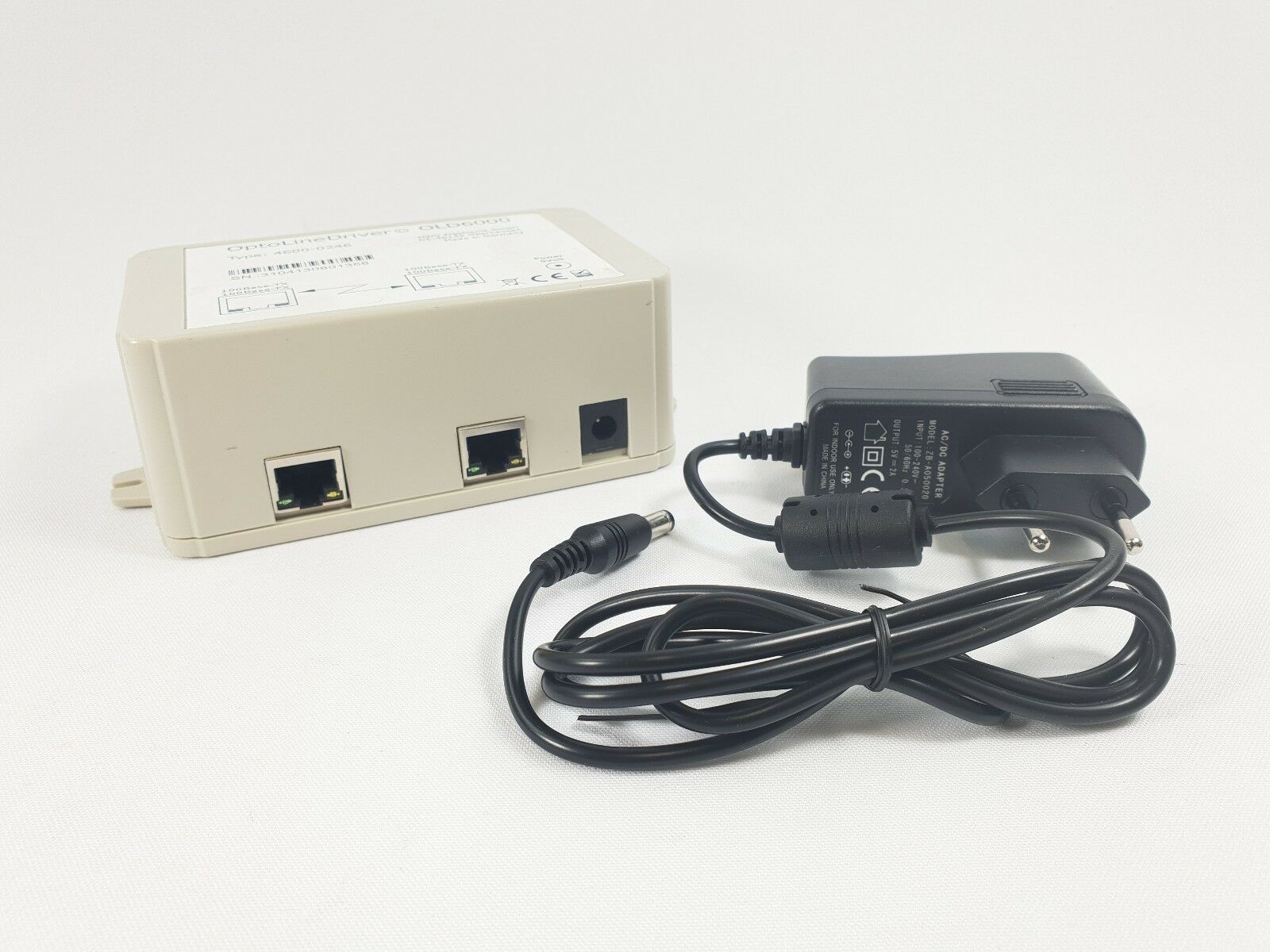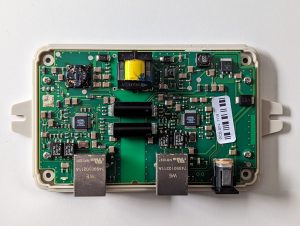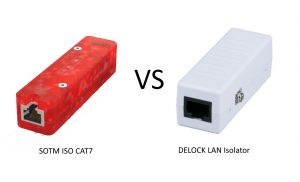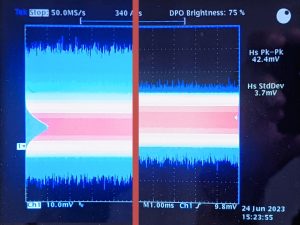After member Uwe / Lurg had pointed out the OLD6000 in the open-end-music forum, I had bought one of these OLD6000, examined it more closely as a possible solution to get rid of common mode noise and shared the findings in the open-end-music forum. After that, a certain level of enthusiasm and dynamism arose, which I would like to put into perspective here.
Background
Those who have understood my activities from the beginning will be able to understand that the OLD has sparked my interest because it could provide leverage for the initially proposed hypothesis that common-mode noise can reach the ground system of the receiver and affect the sound by entering the DAC. Based on this thesis, I also removed Bob Smith terminations, although not directly understood by everyone, I also introduced ferrite cores on LAN cables and separated the ground connection through isolating the shielding of LAN cables. All of this was shared in the open-end-music forum and done with a plan and purpose 😉
Amidst all the enthusiasm about the OLD6000 and its portrayal as a “game changer,” it should be considered that galvanic isolation of the signal path is nothing new in audiophile networks. Isolation using fiber with optical converters has been practiced for years, and devices like the GigaFoil (which essentially does the same thing as the OLD6000) have been discussed in audiophile forums for years as well. Even the EtherREGEN with its “Moat” is based on the same principle. The ultimate question at the end of the day is always what kind of common-mode noise these components themselves produce (and let through) that can affect the sound, and what noise comes from the Ethernet before these devices through the power grid into the DAC.
Since I was not convinced by the sound of the OLD6000 in its original state in my setup, I made some first measurements to find out what the OLD6000 can do.
Comparative measurements
I made first measurements to see how the OLD behaves in comparison to other solutions that implement galvanic isolation. These measurements are intended to provide only an initial indication and are subject to further study.
Since the main effect of the OLD is supposed to be that it interrupts current flows through the galvanic isolation of the signal path but also the power supply, the measurement setup was changed somewhat. Measurements were made on a receiver switch whose housing ground was connected to PE/earth. In the path to PE/earth a 1kOhm resistor was inserted and then the voltage before the resistor against behind the resistor was measured to determine the current flow of the interferences. The results should be taken as an initial indication – they are subject to further review and investigation. To determine the current flow, please divide the measured voltage values according to U=RxI by 1000.
All isolator solutions were operated with the same Peaktech 6080 power supply. Although this is a protection class I power supply, it does not have DC ground connected directly to PE. The FritzBox router was driven with its stock SMPS.
FritzBox 7590
First, the FritzBox 7590 Internet router was connected to the receiver switch via a shielded cheap 15m Cat5 cable and the noise currents to PE/earth were measured. This is just for reference as I then placed the OLD6000 and the other solutions in line and wanted to see if the noise will be reduced or eliminated.

Peak-Peak: 584mV
RMS: 39mV
Fiber – 2 x TPL Link MC100CM Media-Converter
This is the classic setup that has been practiced by many for a long time. Fiber link with two media converters for galvanic isolation. Two TP Link MC100CM was installed between receiver switch and FritzBox router. The first media converter was supplied with the stock power supply. The second converter to the receiver was powered with the Peaktech 6080. The connection cable to the receiver switch was a 1m CAT7 cable with an insulated plug on the transmitter side. This cable was also used for all other solutions.

Peak-Peak: 188 mV
RMS: 6mV
Isolation seems to work!
Wifi Bridge TP Link TL-WR902AC
Since I am currently looking for alternative solutions to reduce the common mode noise, I am experimenting with WiFi repeaters with initial success. The TP Link TL-WR902AC is a small travel router that can also be set to client mode and then works as a WiFi bridge.
Like all solutions, the router was operated with the Peaktech 6080 and also used the same CAT7 to the receiver switch.

Peak-Peak: 176 mV
RMS: 6mV
Isolation seems to work! (If not, then the physics textbooks would have to be rewritten)
Even slightly better than the fiber solution.
OLD6000
Here the OLD600 was placed in the Ethernet signal line with the Peaktech 6080 power supply.

Please note: The Y-scaling had to be reduced because the values were too high!
Peak-Peak: 1184 mV
RMS: 92mV
Oops! – I thought the OLD6000 was supposed to reduce noise. And all measurements, which were made and published about the OLD had nevertheless pointed out that it does not produce critical noise. These measurements were all made differentially and have only limited relevance to common mode noise.
But how can it happen that the OLD produces a sound improvement for many? I currently assume that the low-frequency noise in the common mode are the ones that can have the greatest impact on the sound. This is also seen by John Swenson, who holds leakage currents in the 50Hz range of SMPS largely responsible. It is in this range that the OLD6000 (as well as the other solutions shown) is effective. On the one hand in the signal path, but also through the DC-DC converter inside, which prevents these common mode interferences in the 50Hz range of the switching power supplies and reduces the current flow here through the galvanic isolation. However, it generates a lot in the HF range itself, which the other solutions don’t. And this may also be the reason that there are also some people who do not have any sound improvement from the OLD6000, since they very likely already had a solution before that provided less noise. This might also be the reason why the OLD6000 in its initial state could not convince me.
A trained eye on the circuit board also reveals that the OLD has additional common-mode chokes in the TX and RX signal paths. This should make one somewhat suspicious. These are certainly not necessary to minimize common-mode noise for audiophile purposes; they were undoubtedly required for the device to pass Ethernet compliance tests.
Closing Words
The measurements made are not yet complete and require further investigation, but they correlate with my listening experience. Although the measurements cannot determine which direction the current and thus the interferences flow, they show very nicely that the OLD6000 does not eliminate these current flows (without additional actions such as chokes in the PE/earth path), these are even stronger than with e.g. the fiber media converter solution.
However, this should make it clear to everyone that the OLD6000 is not the final solution to the Ethernet sound problem.
The OLD600 is certainly a good device for anyone who has not yet made any investments in the Ethernet network and works with cheap wall wart SMPSs and routers. As a beginner, you can celebrate your first successes and even get euphoric if you didn’t believe in Ethernet sound before or thought you were on the safe side in this regard. One can also replace some previous optimizations without loss. But to believe or claim the OLD6000 is the final solution shows a lack of imagination or a lack of understanding of the subject .
I will continue to investigate the comparisons and also examine the frequency range of the interference more closely here – more to come.




“After I introduced the OLD6000 as a possible solution for reducing Ethernet common-mode noise in the open-end-music forum, …-” (Eric)
Guten Abend Eric,
es ist zwar nicht besonders wichtig, aber der Wahrheit halber: Ich habe den OLD6000 im open-end-forum ins Spiel gebracht:
https://www.open-end-music.com/forum/audiotechnik-und-hörkultur/audio-zubehör/694844-fmc-sfp-singlemode-vs-multimode-power-meine-erfahrungen/page3#post695086
Gruß
Uwe (lurg)
Hallo Uwe,
damit hast Du natürlich recht und meine Intension jedenfalls ist es nicht, mich mit fremden Federn zu schmücken.
Ich habe dies nun etwas differenzierter verfasst, und hoffe Du fühlst Dich damit abgeholt:
“After member Uwe / Lurg had pointed out the OLD6000 in the open-end-music forum, I had bought one of these OLD6000, examined it more closely as a possible solution to get rid of common mode noise and shared the findings in the open-end-music forum (https://www.open-end-music.com/forum/privatforen/thomas-michael-rudolph-tmr/695953-ethernet-galvanische-trennung-durch-lwl-hier-opto-line-driver-old6000?p=695318#post695318). After that, a certain level of enthusiasm and dynamism arose, which I would like to put into perspective here.”
Beste Grüsse,
Eric
Hallo zusammen,
ich bin aktuell dabei den Artikel mit zusätzlichen Messungen zu ergänzen und komplett in Deutsch zu überarbeiten. Hierzu zählen auch Messungen der Gleichtaktstörungen der Sekundärseite des OLD6000 mit verschiedenen Netzteilen – mit spannenden Ergebnissen.
Beste Grüsse,
Eric
Hi all,
I have made the closing words a bit more understandable – especially for those who thought my measurements were correct for more than a year, because this created pupularity for them and now question them because it suits them and they can put themselves in a better light . . . .
Hallo Eric,
jetzt habe ich Dich auch gefunden.
Von mir auch ein Weiter so.
Gruß
Bert
Hi Stephan & Torben,
Welcome to my new blog!
Nice to see you here – looking forward to continuing exchange with open minded people.
Eric
Hi Eric
Keep up this good work. Thanks
Torben
Hello Eric
I find your work very exciting, they show new, and provable approaches to solutions, which one has not paid so much attention before. Keep it up…